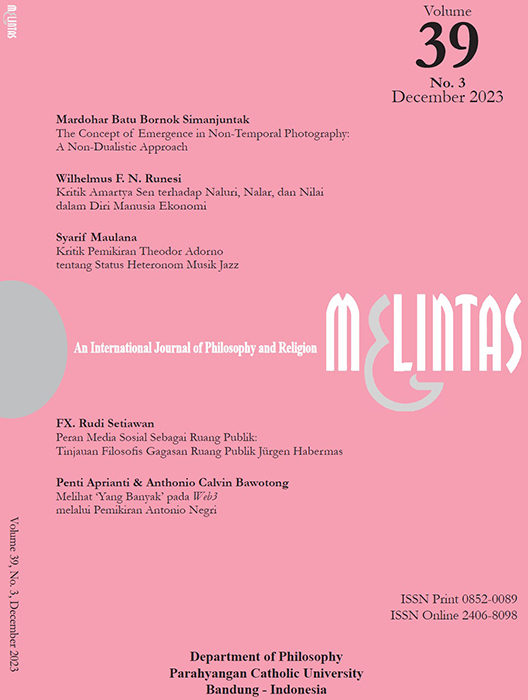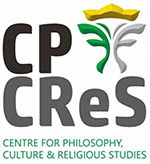The Concept of Emergence in Non-Temporal Photography: A Non-Dualistic Approach
DOI:
https://doi.org/10.26593/mel.v39i3.7823Keywords:
emergence, temporal photography, dualism, non-dualistic interaction, quantum field theoryAbstract
The problem of temporality in photography has invoked a continuous debate concerning the artistic nature of this medium. Previously taken as a different way of seeing, the time signature in a photograph became debatable along with the development of digital photography. Photography’s status as the undisputed evidence of the truth is then no longer relevant. This changes the flow of discourse to a more philosophical one. However, the debate does not provide adequate defence concerning the role of photography in the digital era. The Platonic dualistic approach, especially the Cartesian one, is responsible for this regress. Immanuel Kant introduces transcendental causality to re-examine the Cartesian legacy. This Kantian approach needs to be developed further. Stephen Hawking’s cosmological model of Quantum Field Theory (QFT) working in anti-de Sitter space (ADs) offers a better explanation on this Kantian transcendentalism. The research shows that the non-temporality of photographic images is irrelevant with the development of the medium because Hawking’s approach fits the transcendental interaction proposed by Kant. This article concludes that photography is independent from temporal demands, and that the advancement of photography lies in its potential to pursue non-duality interactions.
Downloads
Published
Issue
Section
License
Copyright (c) 2024 Mardohar Batu Bornok Simanjuntak

This work is licensed under a Creative Commons Attribution-NonCommercial 4.0 International License.
MELINTAS applies the Creative Commons Attribution (CC BY NC) license to articles and other works we publish. If you submit your paper for publication by MELINTAS, you agree to have the CC BY NC license applied to your work.


